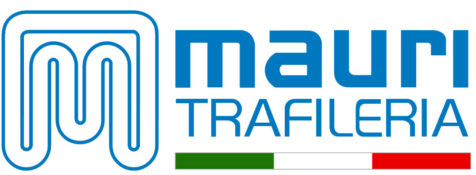11SMnPb30 – 11SMnPb37
The main parameters affecting machinability are:
 Chemical composition
Chemical composition- Shape and distribution of the manganese sulphides
- Presence of stringers
- Strain-hardening and mechanical features
Let’s see each of them in detail:
Chemical composition
Carbon C
The European standard for cold-finished products settles a carbon content C ≤ 0,14 %.
Steel is usually delivered with a carbon content C ≤ 0,10 %; the disadvantage of excessive ductility, typical of steels with low carbon content, is corrected by suitable drawing reductions.
Silicon Si
The European standard for cold-finished products settles a silicon content Si ≤ 0,05 %.
This element is extremely deleterious to machinability and should be kept in an extremely reduced content.
As a matter of fact, silicon tends to fix with the oxygen contained in steel leading to the formation of abrasive inclusions reducing the tool life.
Moreover it has a negative influence on the manganese sulphide morphology. The best machinability results are obtained with a silicon content Si ≤ 0,02 %.
Manganese Mn
It can be found in steels in the shape of manganese sulphides or dissolved in the ferritic basic structure.
Its content can vary from 0,90 % up to 1,50 %.
Phosphorus P
It is dissolved in the ferritic basic structure; it contributes to hardness and brittleness increase, favouring the chip fragmentation.
The European standard for cold-finished products settles a phosphorus content ≤ 0,11 %.
Sulphur S
It is present in steel in the shape of manganese sulphides; it is one of the determining parameter for machinability. We will deal with sulphide nature and morphology in the relevant chapter.
The sulphur content can vary from 0,27 % up to 0,40 %.
Lead Pb
It is insoluble in iron; it tends to bind to the non-metallic inclusions present in steel or it can be found in the shape of elementary particles.
It acts as a lubricant, reduces the friction coefficient between tool and chip and the formation of the built-up edge.
The European standard settles a lead content from 0,20 % up to 0,35 %.
Oxygen O:
If present in steel in the “free” condition (as oxygen not bound to Si and Al) it favours the formation and preservation of round sulphides, essential requirement for a good machinability.
Aluminium Al:
It is extremely deleterious to machinability and must be kept in a very low content. On the contrary, this will result in the formation of alumina inclusions with extremely detrimental effects on tool life.
Hardening elements:
The content of elements like Ni, Cr, Mo etc. must be limited.
Their cumulative value should preferably be below 0,30 %.
The sulphide morphology allows foreseeing the chip behaviour and therefore the machinability performance.
Evenly distributed sulphides with a spheroidal shape (low length/thickness ratio) should generally favour the chip breaking representing a real discontinuity in the steel basic structure.
On the contrary small and thread-like sulphides give a poor contribution to machinability.
Formation of elongated chips and quick tool wear are the direct consequences.


 11SMnPb37
11SMnPb37
Longitudinal section
Round sulphides
Magnification: 100 X
 11SMnPb37
11SMnPb37
Longitudinal section
Thin and elongated sulphides
Magnification: 100 X
We can intuitively think that stringers may favour the chip fragmentation, thus improving machinability in the drilling operations.
On the other hand, they should not show remarkable effects on turning.
There are however conflicting opinions on this subject; generally a marked stringer presence is anyway considered to be detrimental.
 11SMnPb37
11SMnPb37
Slightly aligned and thin pearlite
 11SMnPb37
11SMnPb37
Marked formation of stringers
Thin and close aligned stringers
A good machinability depends not only on the analysis but also on the material hardness and ductility (the metal aptitude to be modelled or deformed).
The lowest hardness isn’t often the most favourable one and it is generally thought that the higher ductility, the lower machinability.
An excessive ductility makes steel soft to cutting giving rise to a bad finish.
A proportionate cold strain-hardening, achieved by drawing, allows an improvement of both features, providing a higher hardness and correcting the too high ductility.
